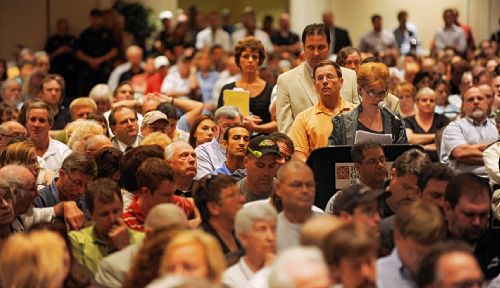
1,200 hear Marcellus Shale debate
July 23, 2010Forum Discusses Gas Industry Money Impact on State Politics
July 25, 2010Former Oil and Gas Producer Tells NYS to "scrap proposed DEC regulations"…wait for EPA to issue its new guidelines
James Northrup, Cooperstown Chamber of Commerce Member News
From Otsego 2000
The regulations on hydrofracking proposed by the DEC were written for existing small vertical New York wells – known in the industry as “stripper wells” – oil wells that produce less than 10 barrels a day. A horizontal hydrofrack in a tight shale formation is from 10 to 100 times larger than the fracks put on these small vertical wells; yet the proposed regulations on horizontal hydrofracking of shale gas differ only slightly from those imposed on small vertical wells.The existing DEC well regulations are grossly inadequate to regulate a horizontal hydrofracked well in shale gas. They are a prescription for disaster for New York’s drinking water.
Horizontal hydrofracking of shale gas formations is essentially a hydrobaric underground explosion, i.e., a bomb. A very powerful, very dirty, pipe bomb. A bomb’s explosive power is a function of the pressure wave it generates and the mass of air or water it displaces. An “air bomb” used in Afghanistan as an anti-personnel device has a pressure wave of about 500 lbs per square inch (psi). It can be heard up to 100 miles away. A horizontal hydrofrack in shale can have pressures approaching 15,000 psi, or 30 times that of an air bomb. That is equivalent to the water pressure 6 miles deep in the ocean. The volume of fluid in a hydrofrack can exceed 3 million gallons, or almost 24 million pounds of fluid, about the same weight as 7,500 automobiles. The fracking fluid contains chemicals that would be illegal to use in warfare under the rules of the Geneva Convention. This all adds up to a massive explosion of a “dirty bomb” underground.



